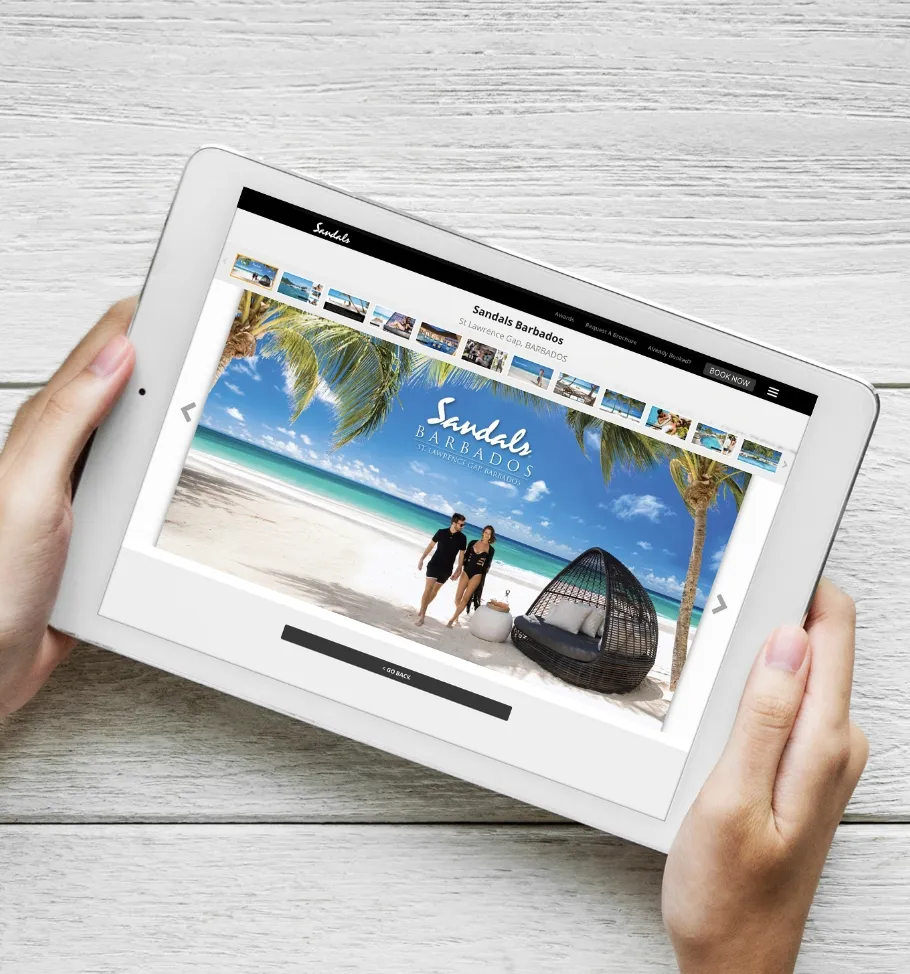
Publishing and distributing your brochure
The best tactics for publishing and distributing your brochure depend on your goals and objectives. If your brochure forms a valuable part of your customer journey, give it a suitable spot on your website and link to it well from key commercial pages. You could also promote it in your e-newsletters, remarketing emails, and social media channels.
Make sure you think about the search terms and keywords that will get your content discovered by those who matter. You have full control over page slugs, titles, meta descriptions, headings, alt image attributes, and more for each of your pages.
Adding forms to your brochure
Adding forms to your brochure is an excellent addition to your lead generation strategy and improves your customer journey. There’s no need to ask for loads of information from your prospective customer unless they are looking for a quote and would be expecting to hand over a lot of personal data. If the form’s main purpose is to arrange a callback or a demo or sign up for a newsletter, then all you need is their name and email. You can always ask for more data once you have established a rapport.
If you encourage leads to sign up for a newsletter, you could consider asking them about their areas of interest to personalize the content.
Gathering data and feedback from your brochure
As with all aspects of your marketing, it is vital to take the time to monitor audience engagement and use these valuable insights to improve and enhance the content. For example, if you find that people aren’t viewing many pages of your brochure and therefore missing out on the all-important benefits summary and CTA, it could be worth testing a shorter, more concise version.
Similarly, if many people are exiting from a particular page, think about what could be causing them to drop off. Perhaps they feel they have learned enough, or maybe you have overloaded them with information. Either way, use these metrics to make your brochure better over time and keep on testing. Small adjustments in the user journey can make a real difference.
These include:
- Unique visitors — The number of people who have visited your brochure over the selected period.
- Page visits — The number of times people have visited each page, including multiple visits.
- Pages per visit — The average number of pages viewed per visit.
- Visit time — The average amount of time spent in your doc.
- Bounce rate — The percentage of visitors who only viewed a single page of your brochure.
Adding rich media to your brochure
Adding rich media to your digital brochure is a great way of bringing your content to life. Interactive elements such as scroll animations, checklists, quizzes, calculators, videos, charts, and graphs help put your reader in the driving seat. They encourage your lead to focus on the content and immerse themselves in the story you are telling. And they’re fun!
You will likely have a lot of information you want to convey in your digital brochure, but communicating all that in the text could exhaust your lead and deter them from reading right to the end. When you are creating the structure of your e-brochure, examine each of the messages and sections one by one and see if there is a way of communicating some of the elements visually. Video explainers, for example, rather than a list of instructions. An interactive chart showing geographical trends rather than a list of stats.
Want to know more? Find out how to put a fresh spin on an existing topic in content creation.
Now it’s your turn…
You are undoubtedly brimming over with ideas and inspiration for creating, formatting, and publishing the perfect brochure to represent your brand and what makes it special.
Remember, you don’t need to do all this alone. Content like eBooks and brochures benefits from a good amount of brainstorming and collaboration. Talk to your sales team and find out what kind of content they know resonates with leads and at what stage of the buyer journey. What interactive elements do they think would be useful to prospective customers and why? Your customer service team can also be really valuable here. What are the most common queries they get, and what kind of explanations are most effective? Are customers always asking for explanations for certain jargon words or technical terms? If so, don’t use them!
Another benefit of involving colleagues from other departments is that you might uncover hidden talent.